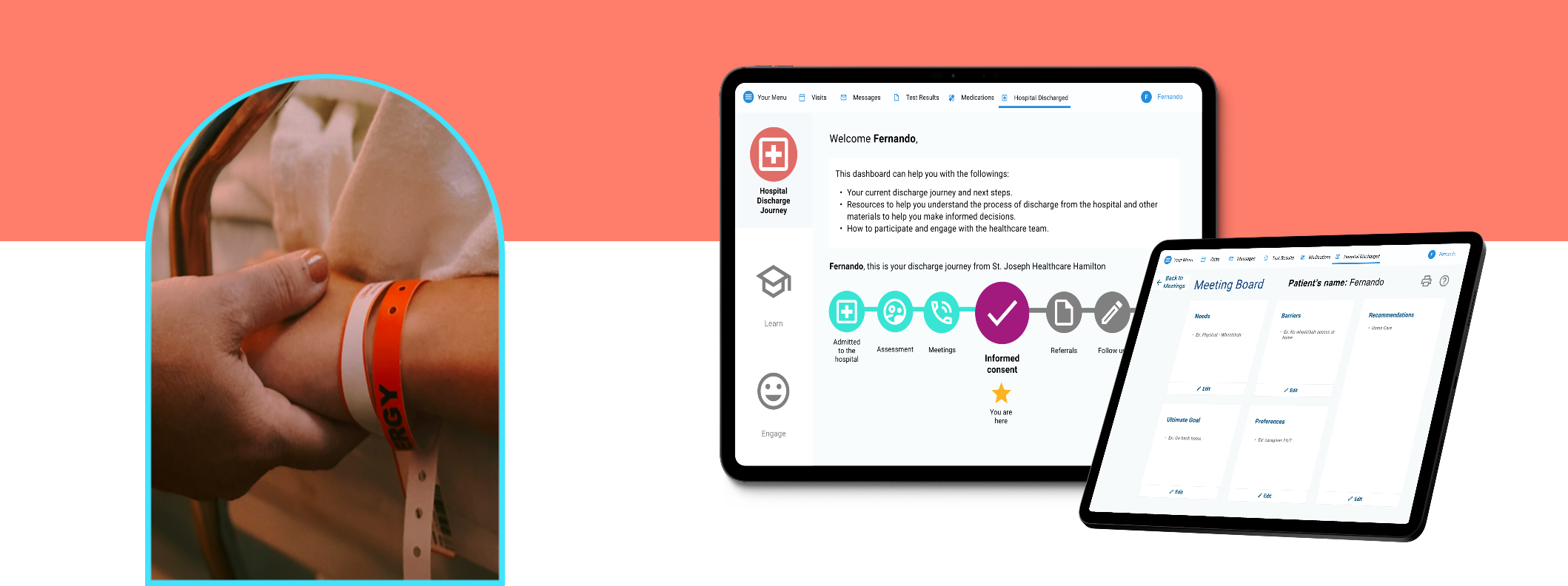
Overview
In Canada, a standardized definition of designated Alternate Level of Care (ALC) is given to patients who are medically stable but cannot be discharged. The Canadian Institute for Health Information reports that ALC accounts for up to 14% of Canadian hospital days, utilizing up to 7,500 acute care beds annually.
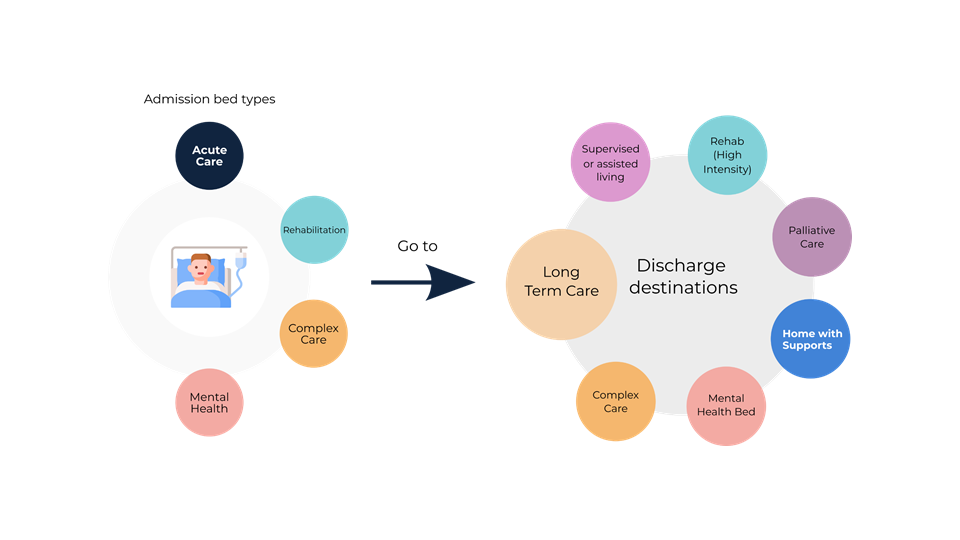
St. Joseph Healthcare Hamilton Hospital and McMaster University collaborated to work on this project. I had the pleasure of being part of this significant project for almost a year.
The challenge was that there was a communication gap between patients, families, and staff was one of the barriers to a smooth hospital discharge journey. The gap affected the patient flow in the hospital and the experience of these patients and family members.
The work ended in the creation of a collaborative and interactive prototype to help patients, family members, and hospital staff with discharge planning.
My Role:
UX Researcher
Teammates:
UX Researcher
Research Student
Duration:
8 Months
1. Initial Research
We conducted initial research during the discovery phase to gain insights into the basic understanding of the process of the hospital discharge journey, its challenges, and the experience of the patients who are heavily involved in the process and what has been done about it in Canada and other countries around the world.
Literature Review
I did deep literature to understand what is the alternate level of care is and why it is important.
The key questions that we had were:
- Common challenges for designated ALC patients and hospitals
- What work has been done so far on this project before we joined?
- How are other countries dealing with Alternate Level of Care (ALC)?
- What interventions have been implemented to address this?
- What are the health conditions of the patients in the ALC unit?
- What community centers/transitional care are involved in enhancing care transition and patient flow?
Social Media
Due to a lack of access to interviewing end-users, I used social media such as Twitter, Reddit, Quora, etc. A few examples of the keywords used were the following: ALC, Long-term Care, bed block, patient flow, and hospital discharge.

Competitive Analysis
Through my competitive research analysis, I found two organizations that have been tackling the same problem as us, Bayshore Healthcare and Humber River Hospital. Thus, we did informational interviews with them to learn about their approach and their solutions. This led to a potential new collaboration between McMaster University and these organizations.
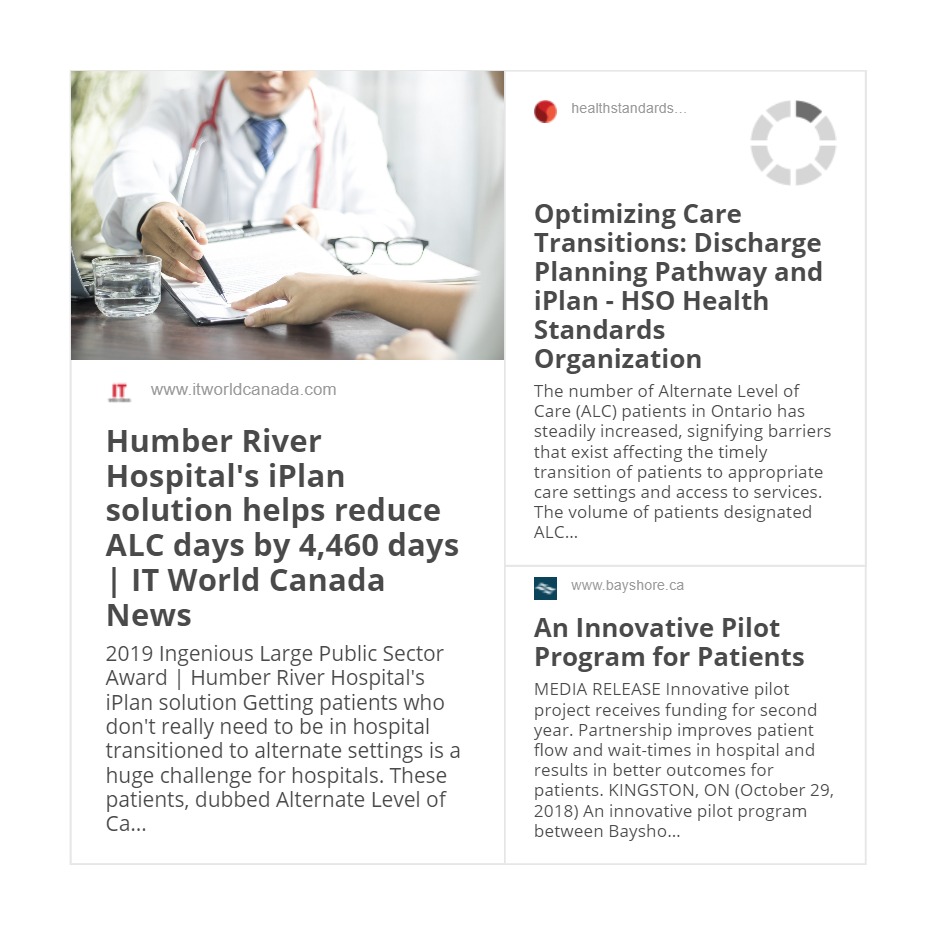
1.1. Key Findings
- The literature review confirmed our insight about the importance of having a conversation with patients/family members because it provides more time for planning and surprises, but sometimes it is difficult when they are not ready to have the conversation.
- Despite not having access to patients before the interviews, we had found a case from the news about a family of a designated ALC patient discussing the financial impacts and the high fee, and they were not much aware of them due to a lack of communication which confirmed our insights further.
2. User Interviews
After initial research, we dived into primary research, where we conducted 25 in-depth interviews with various stakeholders, including:
- Family members
- Social Workers
- Hospital Discharge Coordinators
- Home & Community Care Support
- Director of Digital Solutions
- Advisors (Advocates for patients & family members)
The purpose was to understand who is involved in the Designated ALC patients’ hospital journey and gain hidden insights into the experience of patients and their family members.
The key findings from user research were organized with the Affinity Mapping method.
The following are the direct quotes showing the gap in communication when it comes to hospital discharge.
In this stage, we synthesized the information from interviews and literature review to create order from chaos. Miro tool truly helped with documentation and collaboration.
3. Journey Map
After going through several iterations, I finalized a comprehensive journey map demonstrating the flow for the care team, patients, and family members. Journey Mapping helped us understand and visualize what steps patients, family members, and care team take in the hospital discharge journey, as well as their feelings and thoughts. When we showed it to the senior hospital discharge coordinator, they were impressed with how we could show a comprehensive visual view of the complex hospital discharge, which could be useful for future people working on the project.
Once we found many insights, we were lost…
We thought we knew our project direction, but then we had difficulty defining a scope for the project.
However, after several meetings with internal stakeholders from St. Joseph Healthcare and McMaster University, we narrowed our scope based on the timeline and resources we had to complete the project. Once all the parties were on the same page, we moved on to the ideation phase.
Scope of the project: Improve discharge planning through empowering education and effective communication with patients and family
4. Impact Features
The chosen idea was a collaborative and interactive tool to help with the following:
- Help the Care team start difficult conversations.
- Engage patients and their family members in family meetings.
- Give patients and family members effective information on how the system works.
The following is the summary of our main insights discovered around the communication gap and the potential opportunities that can be addressed.
5. Wireframes
After presenting the sketches of our idea, we considered creating wireframes to organize the content and show how the idea would look to the stakeholders. We designed a responsive website that could be accessible from a range of devices.
5.1. Iteration 1
5.2. Iteration 2
6. Style Guide
We chose the design style of MyDovetale, an existing software used by the hospital, for our prototype. The colour scheme of the prototype is a combination of 5 colours to create a clean look. Here you can look at the main components of our application:
6.1. For Older Adults
After our first usability test of the first prototype, we noticed that users had difficulty navigating and using the prototype. Therefore, we went back to the prototype phase and reviewed who our users were. Our users are older adults who have different cognitive abilities.
Their cognitive structure is sequential. This means that when it comes to dealing with technology, seniors require a step-by-step approach at a slower pace (Yavari, 2017). Thus, it was necessary to change the prototype to introduce each feature and screen gradually instead of all at once. This would help us avoid overlaps of elements on interfaces to clarify their purpose.
After reviewing several app designs for elders, we have discovered that it is common to implement the use of shapes to differentiate components, such as a menu, cards, icons or action buttons for this specific group.
7. Final Designs

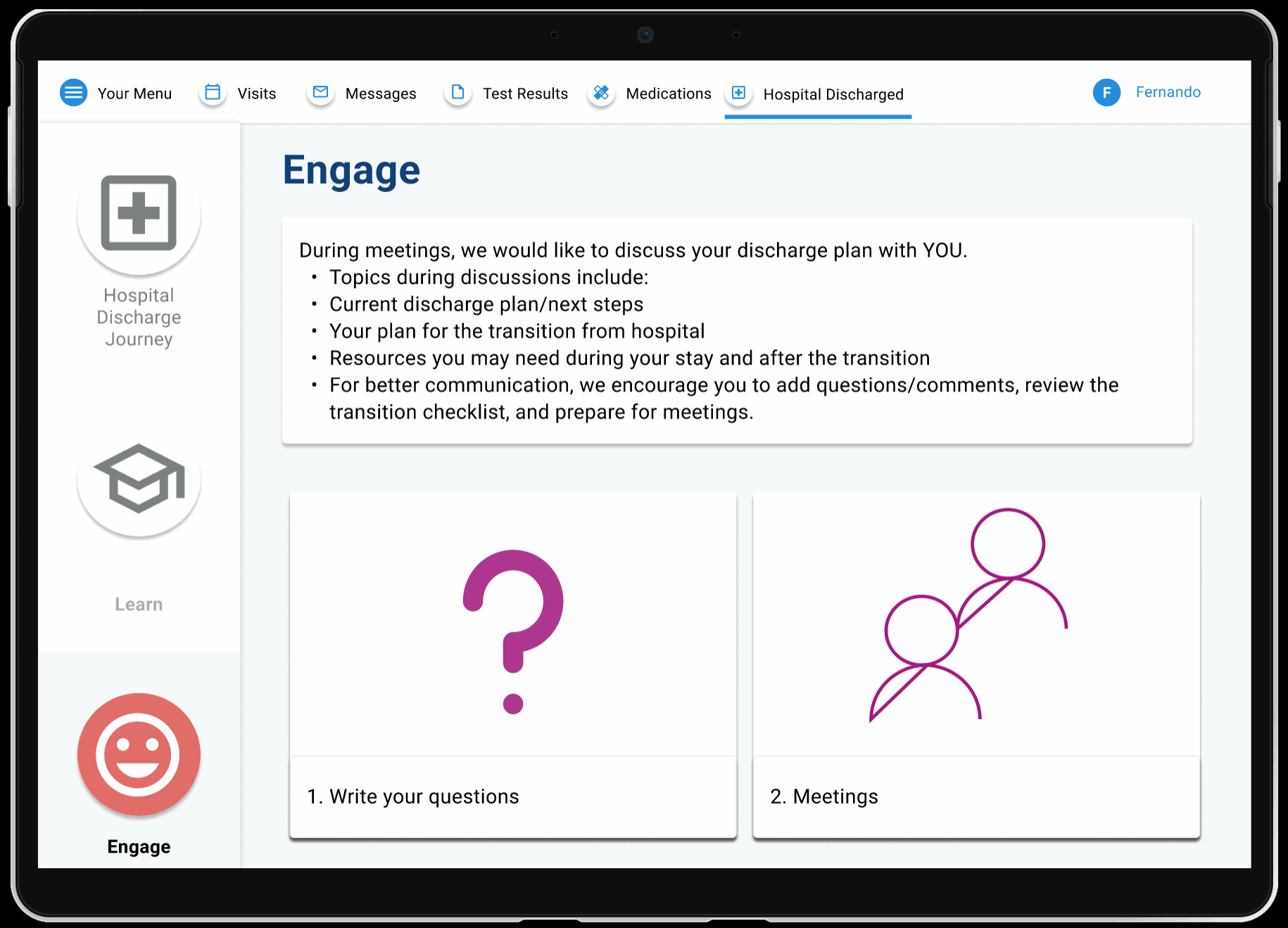
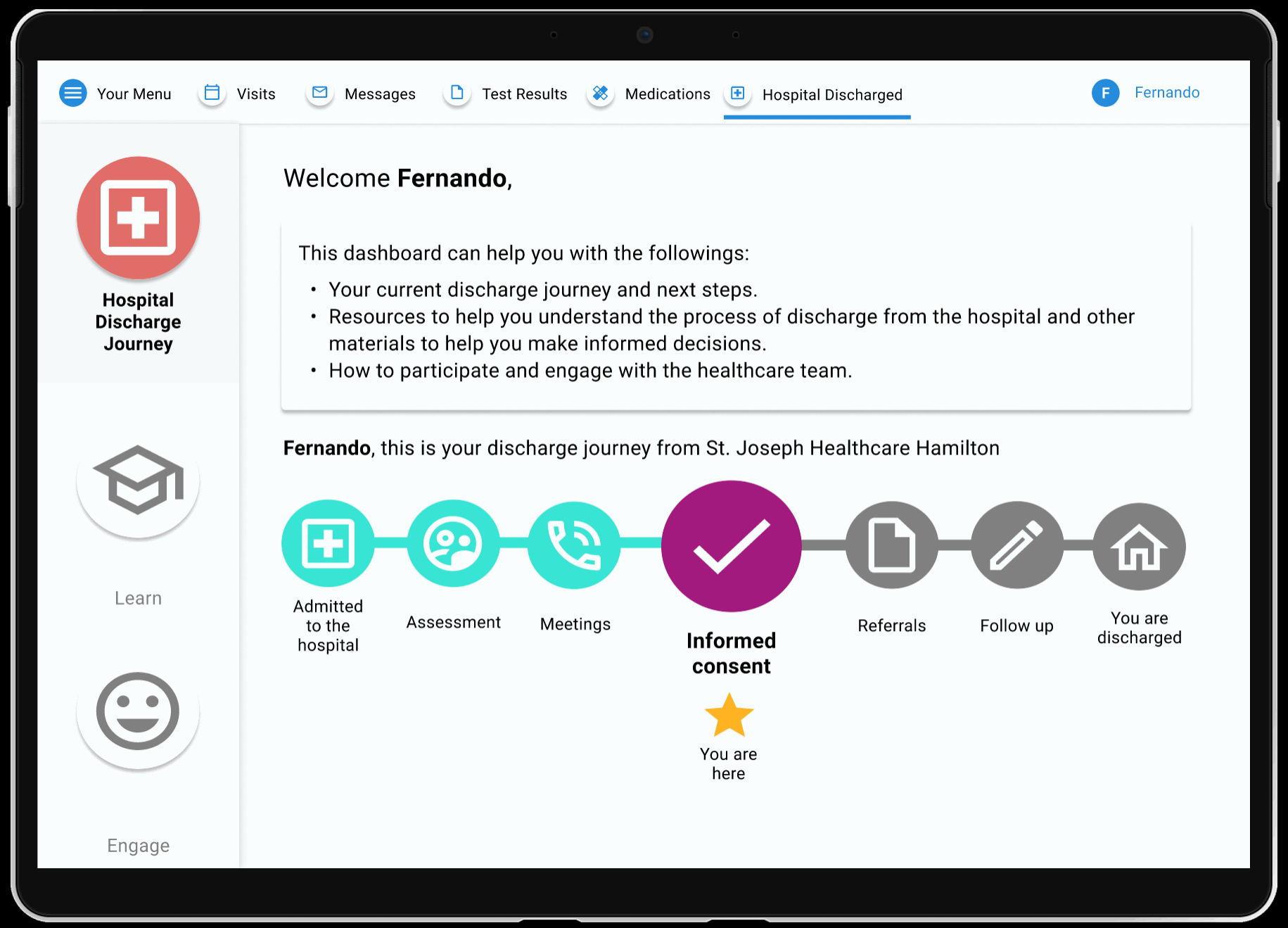
8. Next Steps
The project was passed on to the next newly recruited team, as it is an ongoing project. The following were the next steps:
- Test the prototype with patients using heatmap or first-click tools to capture their interactions.
- Incentivize the use of the MyDovetale application created by the hospital. For example, even though the care team had access to MyDovetale, they did not know what information is shared with patients and how the app works on the patients’ side.
- Conduct more user research around why there is a huge financial barrier to discharge planning and why the majority come with little savings for long-term care. According to Edward Jones (2021), most Canadians are not taking the necessary steps to have a final strategy for health and be flexible to unplanned expenses and events.
